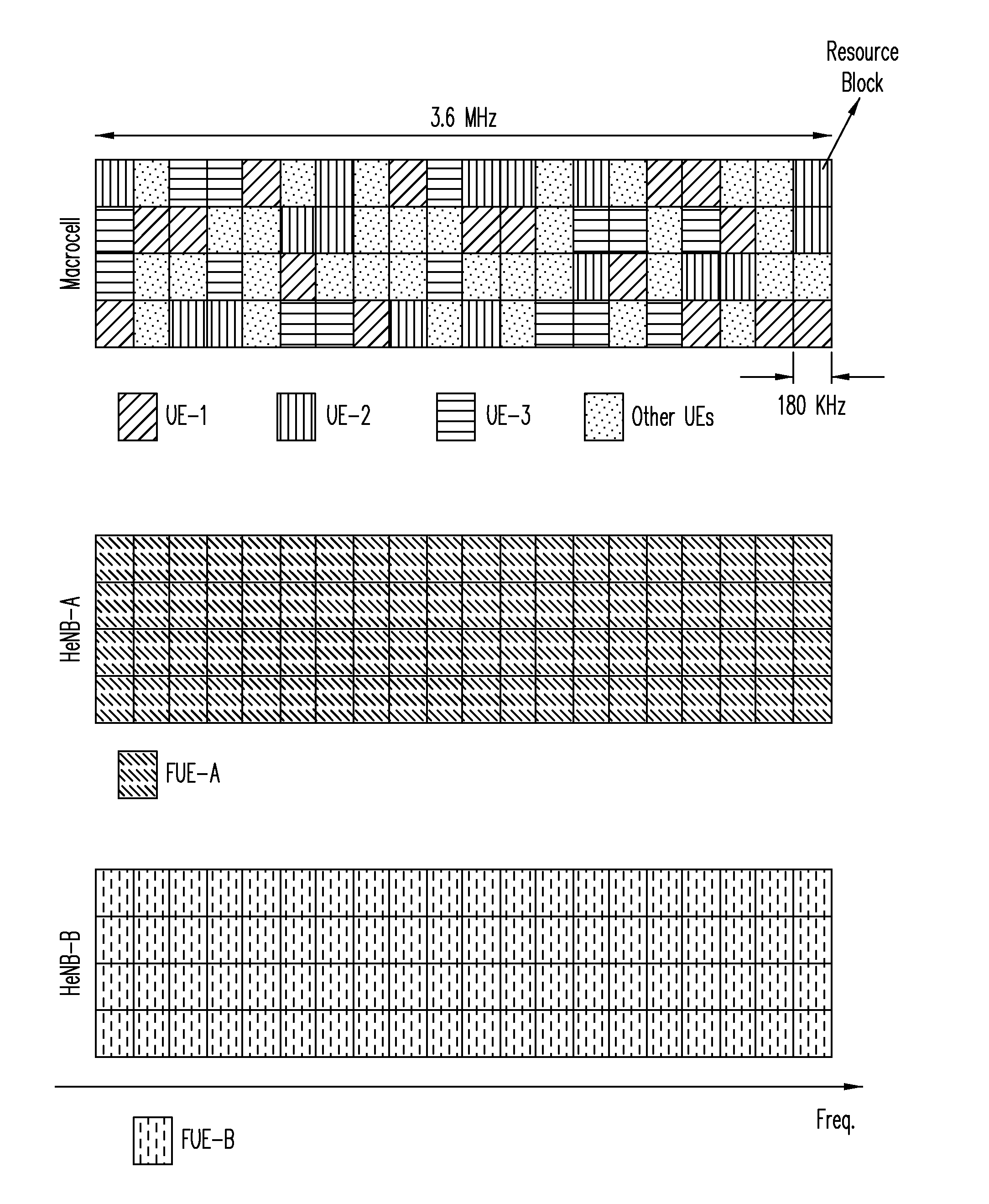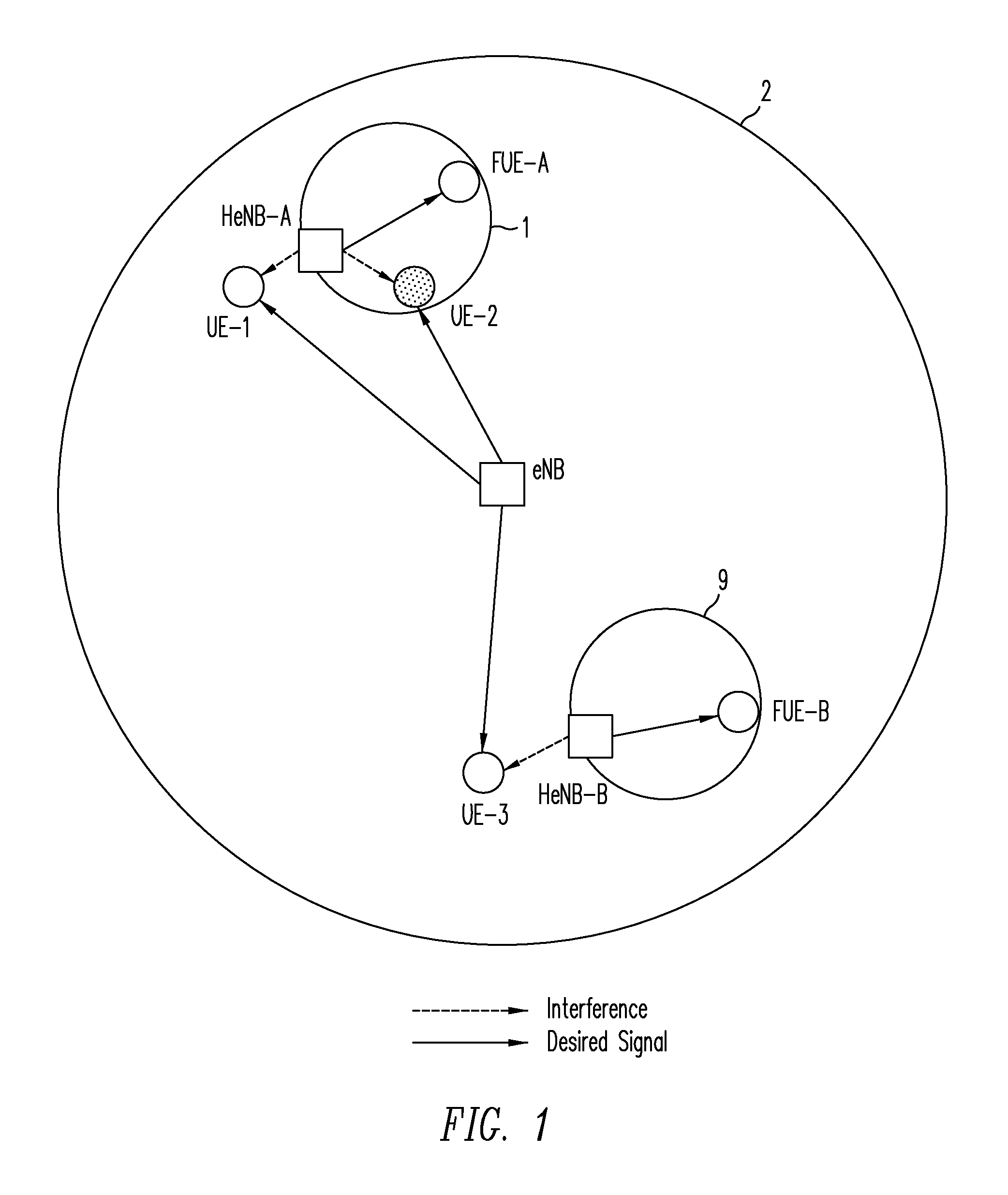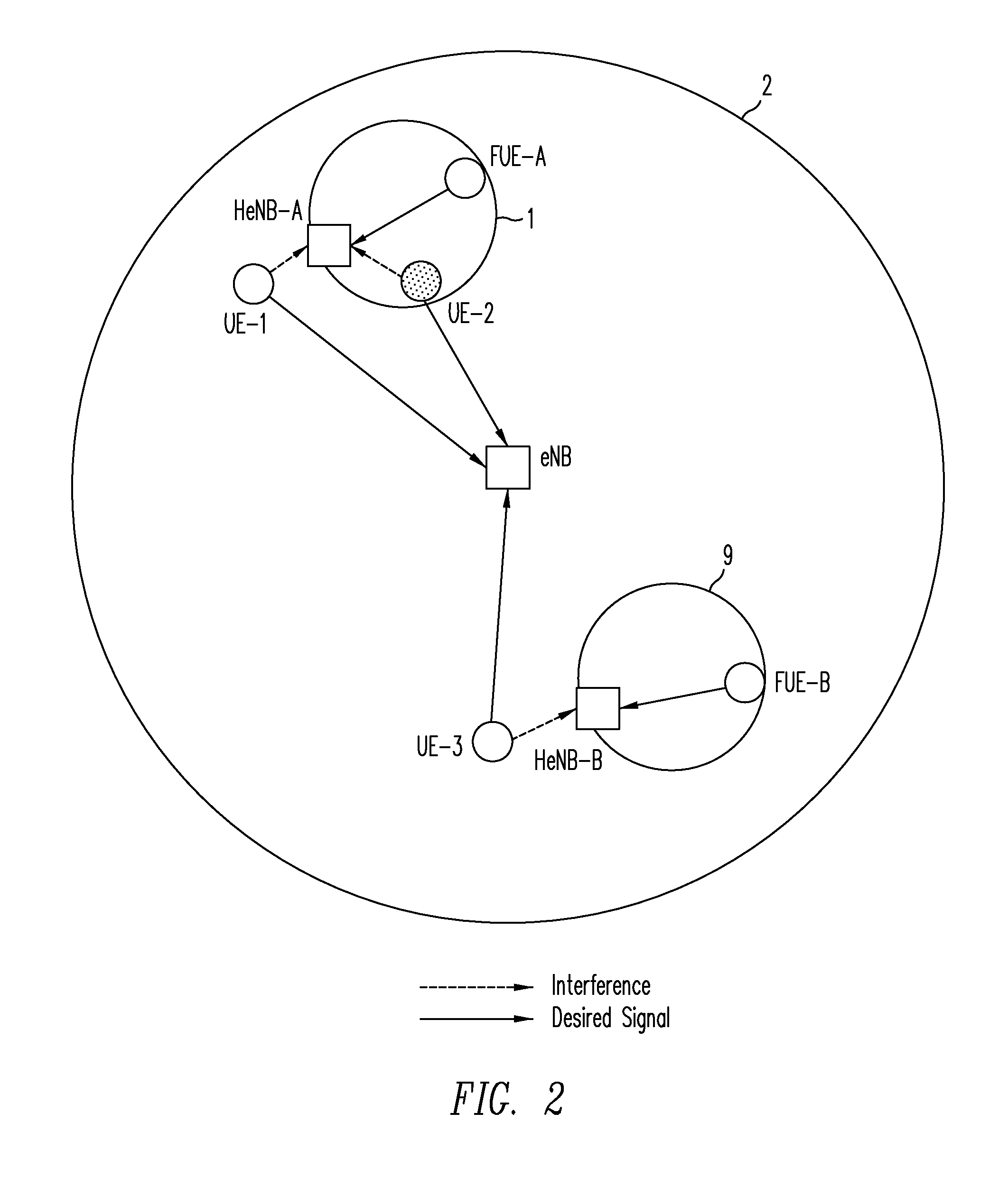System and method for inter-cell interference avoidance in co-channel networks
a co-channel network and inter-cell technology, applied in the field of system and inter-cell interference avoidance, can solve the problems of co-channel interference (cci) raised by csg operation, degrade the average bandwidth available per femtocell user, and burden the backhaul of femtocell owners,
- Summary
- Abstract
- Description
- Claims
- Application Information
AI Technical Summary
Benefits of technology
Problems solved by technology
Method used
Image
Examples
Embodiment Construction
[0026]The downlink interference scenario discussed above may be better understood with reference with to FIG. 1. A macrocell 2 includes a macrocell base station (eNB) and three corresponding macrocell mobile stations (UE-1, UE-2, and UE-3). Two CSG-type femtocells 1 and 9 introduce co-channel interference (CCI) within macrocell 2. Femtocell 1 includes a femtocell base station (HeNB-A) and a corresponding femtocell mobile station (FUE-A). Similarly, femtocell 9 includes a femtocell base station (HeNB-B) and a corresponding femtocell mobile station (FUE-B). The interfering downlink transmissions are denoted by dotted arrows in FIG. 1 whereas the desired downlink transmissions are denoted by solid arrows. In that regard, note that macrocell mobile station UE-3 is relatively close to femtocell 9 whereas macrocell mobile stations UE-1 and UE-2 are relatively close to femtocell 1. Because these CSG-type femtocells are closed, these UEs suffer from co-channel interference from the nearby f...
PUM
 Login to View More
Login to View More Abstract
Description
Claims
Application Information
 Login to View More
Login to View More - R&D
- Intellectual Property
- Life Sciences
- Materials
- Tech Scout
- Unparalleled Data Quality
- Higher Quality Content
- 60% Fewer Hallucinations
Browse by: Latest US Patents, China's latest patents, Technical Efficacy Thesaurus, Application Domain, Technology Topic, Popular Technical Reports.
© 2025 PatSnap. All rights reserved.Legal|Privacy policy|Modern Slavery Act Transparency Statement|Sitemap|About US| Contact US: help@patsnap.com



